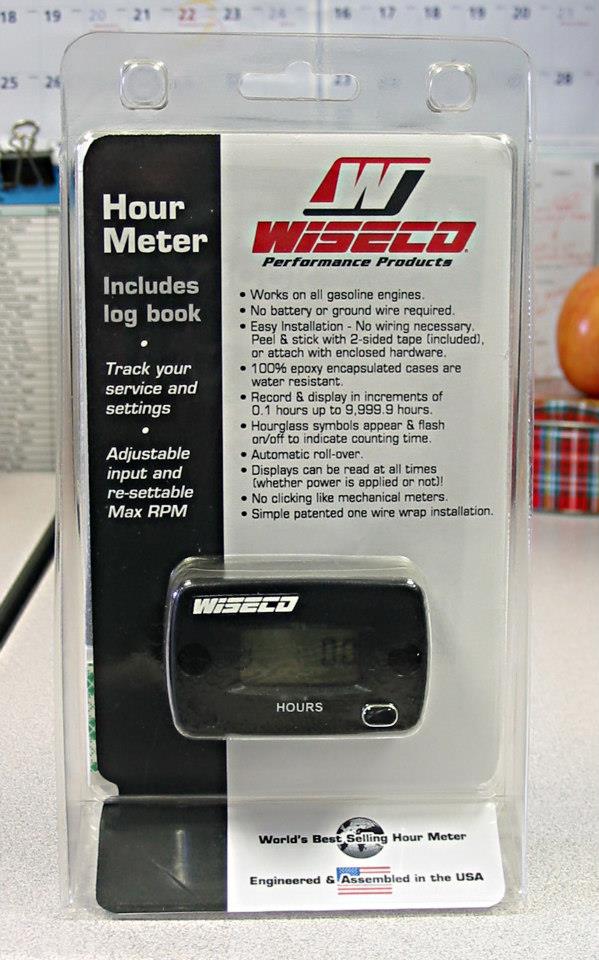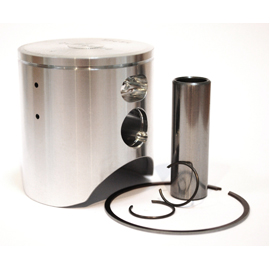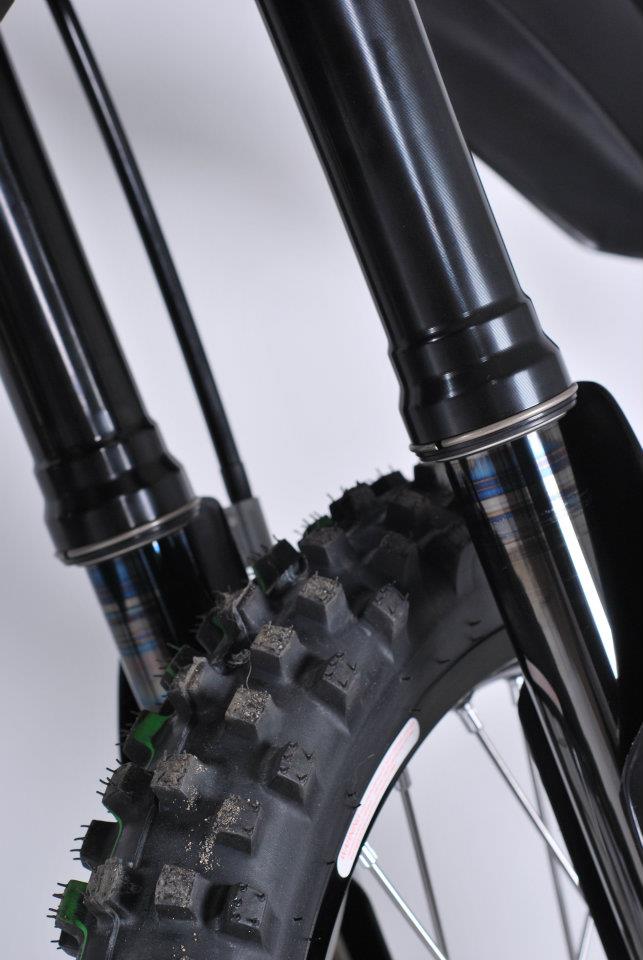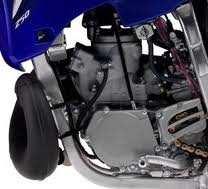This is a general motocross bike maintenance article. If you have a Two Stroke (which you should) skip the Four Stroke tips. If you have a Four Stroke skip the 2T tips.
Carnage every where. You see it every week at the track.
No not the crashes… the engines.
Is there anything you can do to keep your bike ready to race without digging
$1500 bucks out of your wallet to band-aid up your engine at an unplanned time?
You bet there is.
It’s all about getting a grip on your weekly maintenance.
At the National level of racing an engine has a life limit of around 4 hours
before overhaul. In contrast a beginner rider could go a couple of seasons
without a whole lot of maintenance.
But what about you the local racer?
Where does the life of your engine fit into a schedule?
Before we start with a couple of maintenance interval suggestions please take
note that if your owner’s manual suggests shorter intervals for your particular
bike then you should follow it and not follow these suggestions..
First you will need 3 things
1. An hour meter,
2. A piece of paper to track your practice/ race days and engine hours.
3. A place that is comfortable to work on your bike. maybe some music and good
lighting.
There may seem a lot of information in the suggestions below but realize you
will be spreading most of these items across an entire year of racing as you
set up your own race prep program. Doing a little each week and more on other
weeks will pay big dividends as the racing season plays out. Also working on
your bike can be some good man-cave time. That time to recharge yourself and
just be alone with some tools and your bike.
Lets start simple, for every gallon of gas your bike uses it uses over 10000
gallons of air. so lets look at the Air Filter
Clay based and loam tracks ……………………………… .Clean Every Ride.
Sand, and ash tracks ……..…………………………………. Clean Every Moto and use a
filter skin.
Indoors, Arenacross on clay ………………………………Clean Every other ride
Filter tip… One of the easiest ways to maintain your filters is to buy 4 or
more filters. Use the No-Toil system and wash them in your washing machine.
They come out super clean with out all the fuss of cleaning.
What about Engine oil? Unlike your car your bike relies on the oil tank screen
(if installed) and the filter to separate the clutch and transmission debris
from the valve train and crank bearings (Unless you have a Honda with separate
oil chambers) keeping clean oil is very important.
Oil only change …………………………………………..every 2 . 5 Hours
Oil and Filter and if fitted clean the oil tank screen ….. every 5 hours
2 Stroke …. every 5 hours
Next lets discuss your valves.
There is a good reason the manufactures made it very easy to check your valve
clearance.
They want you to check them regularly ,
A valve clearance check only takes about 20 minutes and the money and stress it
will save you is worth it.
Valve Clearance check …………250F every 7 hours and 450F every 10 hours
After a shim size change check again in 5 hours,
What the measurement tells you…….When a valve requires its second smaller
shim size installed (not counting break in shim adjustments) its time for the
valves to be replaced and inspect the valve seats, and guides for condition.
Skip this check at your wallets demise. A valve failure can cost more than the
bike is worth, as it often takes out the head, cylinder and crank and sometimes
the engine cases. Also having your motor lock up at the wrong time could be
very painful.
P.S. While you are inspecting your valve clearance take a good look at your cam
for any damage.
Getting a grip on your clutch.
Since the 1980′s the manufactures have offered a quick access clutch cover so
you can change clutch plates between motos. That said how long your clutch
lasts really depends on your riding style. Some folks will go through a clutch
in one moto where another racer will go 3 seasons on a clutch.
You alone can set the interval for your clutch inspection , but for starters
check it before any important race or at the first tiniest hint of any
slipping.
What to look for, …warped or burnt metal plates, hub notching, worn fiber
plates and weak springs.
Staying on Top of your Top End.
A Top End task would include replacement of the piston , piston rings, pin,
circlips, valve springs, seals. and piston rod bearing (if installed).along
with all associated gaskets.
While it is apart inspect the cylinder, cam chain , tensioner ,guides, valves,
seats, cams and bearings. Inspect the crankshaft rod and bearing.
For a 2 stroke clean the power valve, inspection of the reeds and a leak check
of the crank seals would need to be done.
80/125 2 stroke ….. replace the piston ring ever 20 hours and piston every 40
hrs
250 2 and 4 stroke …. every 40 hours.
450F every 60 hours
Top end tips.
1. Store your bike with the piston on the compression stroke so the valve
springs are not being compressed.
Think of it the same way as leaving your bike tied down tight in your truck for
a week with the fork springs compressed.
2. 2 strokes adjust your power valve cleaning interval to its needs. You will
feel when there is a loss of power. All you will have to do is check the hours
since you cleaned it last and set up your cleaning interval.
3. Replace the cam chain with every other top end. Unless you ride on the rev
limiter a lot then change it with every top end.
Time to venture away from the engine.
It would be hard to imagine anyone who has been racing for very long who has
not had to deal with rusted out linkage and steering head bearings. If you
would like to never and I mean never have to deal with that kind of train wreck
again here are some lube intervals that have worked well.
If you pressure wash …. lube your linkage and steering head every 10 rides.
If you garden hose wash….lube your linkage and steering head every 25 rides
Fuel Injection and fuel tank.
Many fuel injection systems have a filter that fits into the injector just
under where the fuel line attaches. That filter should be cleaned or replaced
at the very least twice a season. It is also a good time to drain your gas tank
and clean it too. Be sure to follow all gasoline safety precautions in your
manual.
What about your shock and forks. By setting up an oil change interval you get a
chance to inspect the bushings and piston rings on your suspension as you get
the oil out that has all kinds of shock and dirt debris floating around in it.
An oil change every 25 rides is a general number to shoot for many would
argue for 10 hours but most folks can live with 25 rides.

Last but not least a weekly check of your bikes general condition,
Brake, engine, and radiator fluid levels.( KTM clutch)
All Hardware and spoke security,
Wheel hubs, sprocket, frame, steering head and engine mounts for cracks,
Tire pressure and condition
Wheel bearings for play
Linkage and swing arm bearings for play
Radiator hose clamps for security
Oil leaks, engine, brake, radiator, clutch. suspension.
Cable adjustment, and condition.
Sprockets and chains for serviceability
Chain lube tension and condition..
Brake pads for wear
Drain Carb after each wash
When you spread your weekly maintenance out over the year you will have weeks
with very little to do but you will have a lot more confidence that your bike
will be in good racing shape. Hope these suggestions will work for your own
weekly race prep.
Thanks to David R. for contributing this content!





